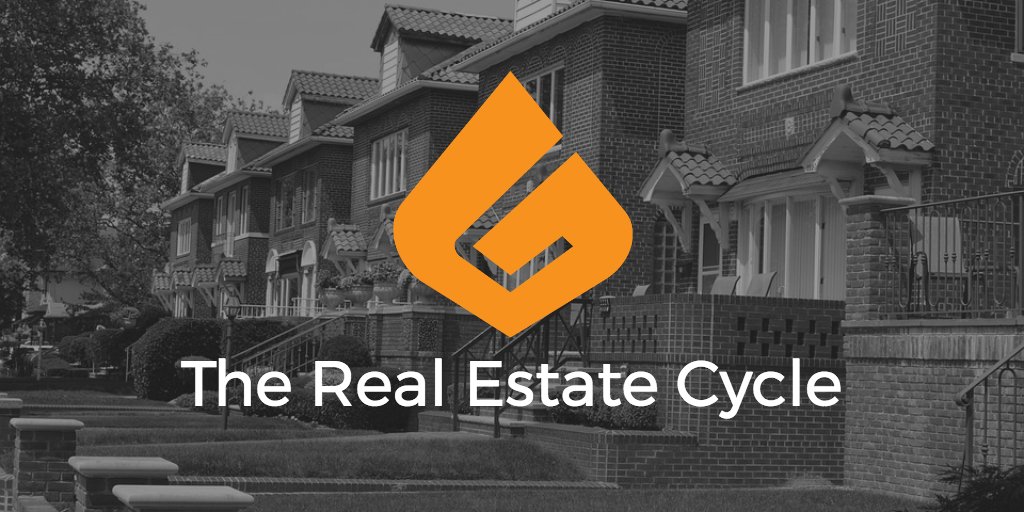The Yearly Cycle
The important thing in the real estate cycle is not necessarily to know how to predict a potential market crash or a real estate bubble but to be prepared today if/when it does happen. No one can predict the future, but history reveals we are constantly in some kind of cycle whether it be real estate, the stock market, or economically.
If you look at real estate in a vast 200-year picture it travels back to the 1800’s there is a pattern even back then of a real estate cycle. Number one, there is an up and downtime frame every year in the real estate cycle. It will be different in various locations of the country depending on their geographical location and time of year.
The last market crash of 2008 was predicted with an absolutely ridiculous degree of accuracy long before this whole phrase collateralized debt obligation even entered into the marketplace. There are definite negligent parties that contributed to this crash, but the real cause of this crisis is far older, far more interesting and far more profitable. Knowing how to navigate through the next event like this will give you an advantage and not catch you off guard.
The Contributing Factors
Currently, there are over a trillion dollars of credit card debt. We are “debting” ourselves to death. Compound interest can be used in two ways. It is not a neutral party. It will either work for you or against you. It will snowball either way. So, those paying off debt have compound interest working against them. On the other hand, if you are a lender, it can work to your advantage. For instance, in active turnkey, you buy a rental. Use the proceeds from that rental to buy another. What does that do? It compounds your interest.
Another contributing factor to the real estate cycle is student loan debt. It is completely out of control. A person graduating from college with a $200,000 loan debt chained to them will pay on this debt for decades or a lifetime.
We are in what I call an “Uber economy”. Things are changing from the way we used to operate. Brick and mortar commercial real estate is becoming less and less common. Residential real estate is secure because there will always be a need for buying and selling homes. There will always be a need for a place to live. On the other hand, because of things like Uber, Travelocity, Airbnb, and Amazon, etc. it has opened up a different option to buy and sell in today’s marketplace. For instance, Uber is the largest taxi service in the entire world, yet have no vehicles. Airbnb is the largest provider of nightly housing or hotel housing, and own no real estate.
As a result of this type of economy and avenue to make money through the internet, it has changed the future of real estate commercially, but not necessarily residentially. You cannot physically live on the internet. You will always need a physical place to reside.
Each of the above mentioned are just a few of the contributing factors that affect the real estate market.
The Signs to Watch For
Warren Buffett says, “When people are greedy, be afraid, but when people are afraid, get greedy”. We are seeing signs of greed. For example, we have a propped-up economy. Our interest rates are extremely low. This is the time to take advantage and purchase a rental property in today’s economy. If the rates were to double it would benefit in an enormous way.
Unemployment numbers are not completely accurate because of part-time employment and those with multiple jobs contribute to the inefficiencies of the unemployment numbers.
Almost all commercial paper is being securitized, once again, just like we saw in the early 2,000’s.
Lending companies are beginning to heavily market to those with a low credit score and offering them easy access to a mortgage loan. Another enormous trend to watch in the market.
The Rule of Real Estate
Real estate is guided by one rule; supply and demand. Prices increase when there is a high demand and low supply. Prices decrease when there are a high supply and low demand. Both of these create problems in the real estate market. However, there is an opportunity in each of the problems. Focus on the opportunity in your market cycle realizing there is a way to take advantage of it and create long-term income.
The Four Phases of the Real Estate Cycle
The phases of the real estate cycle are recovery, expansion, hyper supply and recession. As early as 1876, Henry George observed these four cycles in real estate continuously moving. Within a year, there is always the ups and downs of the market and typically, a major correction about every 18 years.
The Transition Phase
The transition from recovery to expansion occurs when companies and individuals purchase or rent most of the available buildings. In turn, occupancy begins to exceed the long-term average. As unoccupied buildings become scarce, landowners raise the rent, and prices start to increase on retail residential houses, offices, etc.
Since most real estate expenses are fixed, increased revenues translate almost dollar for dollar into increased profits. What happens when you have increased profits? Increased profits attract new development of vacant land. Vacant land development is what pushes the recovery phase into the expansion phase.
Expansion Phase
By the time meaningful amounts of inventory become available the overall economic expansion has been underway and most people don’t realize this. Those who are new to the real estate industry see this expansion and forge ahead with more construction and this creates extra supply which begins tipping the scales from expansion to hyper supply.
Hyper Supply
Hyper supply is a result of increased vacancy because of an overabundance of construction. New subdivisions continue to build because there is already so much invested in their project. In essence, the builders and developers go under because they are literally putting supply on the market for which there is no buyer. As long as the current occupancy rate exceeds the long-term average, there will always be upward pressure to rent and pressure on prices.
As long as there is upward pressure, new construction is financially feasible. When this comes to a halt, new construction is no longer feasible. This is the case for both expansion and hyper supply phases of the market cycle.
The Indicators
The defining point between expansion and market hyper supply is the amount of unsold inventory or vacancy. How long does it take for a house to sell once it has been put on the market? Many places in the country a property will be listed on a Friday night and be sold by Monday morning 99% of the time. There are other areas where this is not the case.
Another indication to pay attention to is occupancy falls. When this falls below the long-term average, then new construction stops, new projects started in the hyper supply phase continue to be delivered because they are already in the process of construction. Additional surplus inventory leads to lower occupancy which affects rent prices.
The next indication for investors to watch is the increase in interest rates. The increase in prices throughout the broader economy is accompanied with expansion in the hyper supply phase. Eventually, this will force the Federal Government and the Federal Reserve to fight inflation by increasing interest rates.
The Recession
We all know the characteristics of a recession. It is indicated by high unemployment, decreased consumption along with decreased company investment in buildings, factories, machines and the price of land. As population increases so does the demand for goods and services. More money can potentially be made during a recession than all the other three phases combined if you are attentive and prepared.
The combination of lower occupancy and lower rent rates on those occupied units, along with, increased interest rate expenses contribute to a recession. It’s sufficed to say the downturn in real estate markets has a huge impact on the economy as a whole. Furthermore, this pushes real estate markets down even farther which, just as we saw in 2006, 2007 and 2008, causes it to completely crash.
At this point, the real estate cycle comes full circle, resulting in investors picking up real estate bargains.
Today
What can we do today to prepare for the real estate cycles? Know they are coming and begin building a stronger cash position. Pay off as much debt as you possibly can. Not only personal debt but business debt as well. Next, build a cash flow of drivers that perform in any market cycle. Build relationships with private lenders. By building a network of private lenders it will enable you to borrow money when the downturn happens. Learn from other investors failures and successes. Stress- test your business. Fund your self-directed IRA. Be ready emotionally and mentally. Set yourself up to benefit from the next correction. Take charge and own this part of your life in your financial success and freedom.



